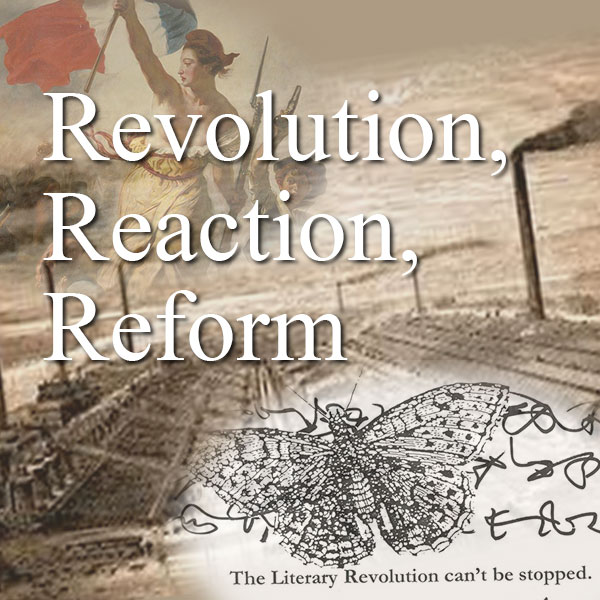The Battle of the Somme took place near Somme river between the Allied and German powers of WWI along the western front. The battle only lasted from July to November 1916, but the destruction was vast. There is an estimated 420,000 British soldiers lost during the war. This tragic loss shook the foundations of many English individual's faith, questioning the goodness of the God they believed in. Furthermore, the support of the church going toward the war created further distance between the individual and their religion.
MSSU ENG272 - Spring 2025 Dashboard
Description
 British Literature II: Revolution, Reaction, Reform examines British literature from the late eighteenth century to the present, a period that witnessed the American and French Revolutions, slave revolts such as the Haitian Revolution, a “revolution in female manners,” the Industrial Revolution, the twentieth-century revolutionary wave in Europe, as well as World War I and World War II, and, of course, artistic revolutions. We will consider how the authors and literary works of this period might be reacting to change, advocating for reform, or participating in literary revolutions—whether revolution is understood in the sense of “revolving” or of “revolting,” going full circle to return to a previous (more perfect?) time or experiencing/effecting a great alteration or rupture.
British Literature II: Revolution, Reaction, Reform examines British literature from the late eighteenth century to the present, a period that witnessed the American and French Revolutions, slave revolts such as the Haitian Revolution, a “revolution in female manners,” the Industrial Revolution, the twentieth-century revolutionary wave in Europe, as well as World War I and World War II, and, of course, artistic revolutions. We will consider how the authors and literary works of this period might be reacting to change, advocating for reform, or participating in literary revolutions—whether revolution is understood in the sense of “revolving” or of “revolting,” going full circle to return to a previous (more perfect?) time or experiencing/effecting a great alteration or rupture.
Access the works for annotations assignments in COVE Studio here: ENG 272, Spring 2025
The digital edition of Frankenstein for annotations and the map project can be found here: Mary Shelley, Frankenstein (1818)
Galleries, Timelines, and Maps
Individual Entries
Westminster Abbery has served as the place of coronation since 1066. The church has served as a ceremony space for weddings as well and is widely recognized as one of the most important churches of England. Today, Westminster Abbey is still a regularly operating church, signifying the importance and impact of religious on everyday people, but especially on the state of England.
St. Paul's Cathedral is one of the most well known religious buildings throughout all of Britain. The Old St. Paul's was burnt in the Great London Fire, but construction began again not long after. The new version was finished in 1711 and served as a symbol of Christian resillience. St. Paul's has served as a center for many religious cermeonies, some of which include marriages and mourning. Today, St. Paul's still stands, serving as a reminder of the history of religion in Britain.
Buckingham Palace is the London residence of the monarchy. Beginning in early 1700, monarchs resided in the palace. Since then, the connection of religion to the monarchy has stayed intact. The ceremonies and titles all date back to religious importance relating to the Anglican church. This interconnectedness between the church and the monarchy became the reason for many individuals to turn away from religion.
